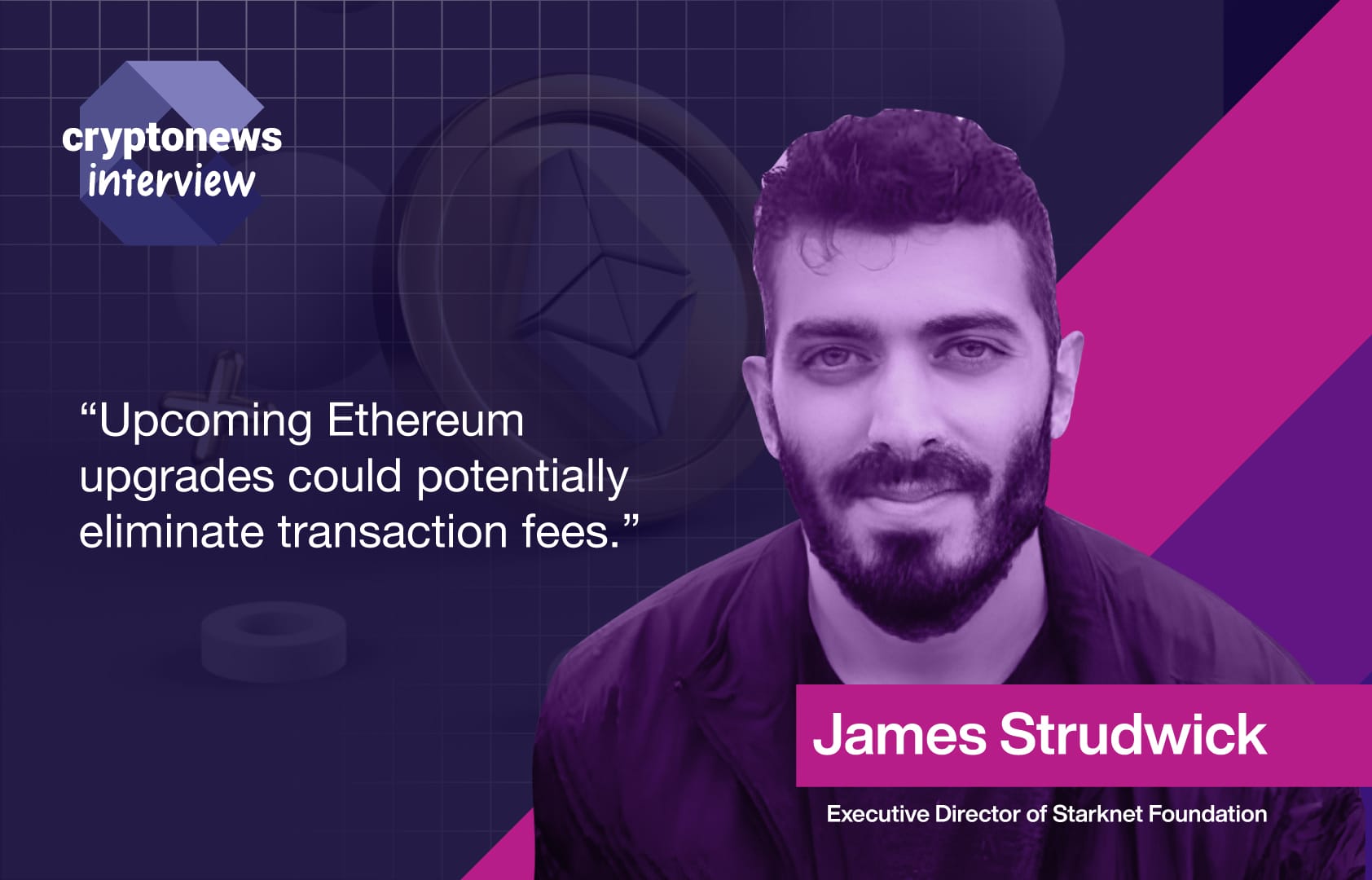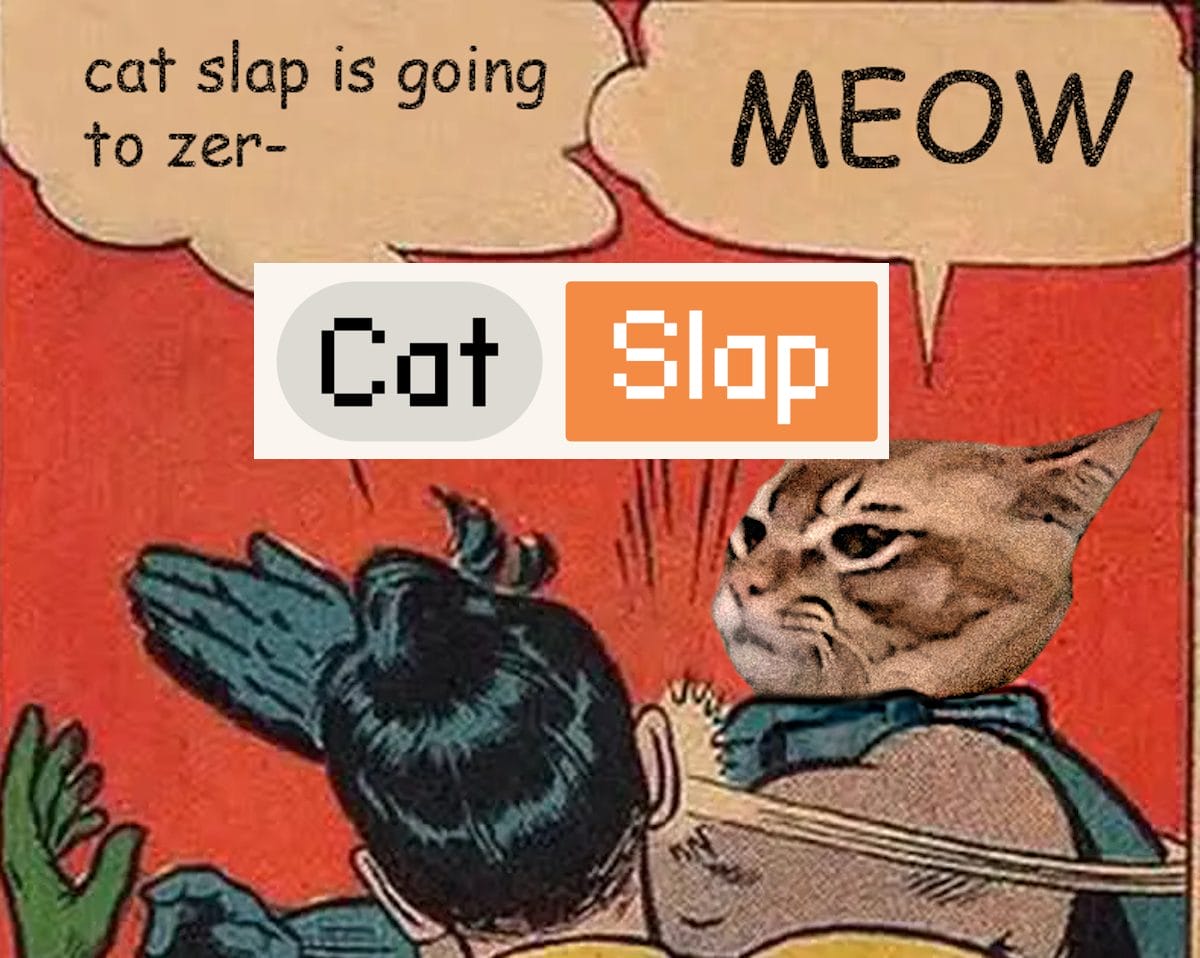‘L2s Don’t Compromise Ethereum’s Cypherpunk Vision but Make It True‘

How will Ethereum’s future change with major upgrades like Pectra and Verge on the horizon? In this exclusive interview, James Strudwick, Executive Director of the Starknet Foundation, explains how these upgrades could lower fees, improve scalability, and make Ethereum easier to use. He also discusses the role of Layer 2 solutions and responds to some of the criticism surrounding them.
Cryptonews: The Pectra upgrade is scheduled for the end of 2024 to Q1 2025. Vitalik Buterin has also announced the Verge upgrade. In your view, what will be the most significant changes average Ethereum users can expect after these upgrades are fully deployed?
James Strudwick: With the upcoming upgrades, Ethereum users can look forward to significant improvements that will make Ethereum more accessible, affordable, and scalable for everyone—in other words, a better experience all around.
The Pectra upgrade, which is split into two parts, incorporates multiple Ethereum Improvement Proposals (EIPs) aimed at enhancing Ethereum’s performance. A major part of this upgrade is PeerDAS (Peer Data Availability Sampling), which builds on the earlier achievements of EIP-4844 from the Dencun upgrade in early 2024. PeerDAS will expand Ethereum’s data availability (DA) capacity, effectively reducing transaction costs on Layer 2 solutions like Starknet. This shift could bring transaction fees on Starknet close to zero, making Ethereum-based applications and transactions more accessible and cost-effective for everyday users.
Meanwhile, the Verge upgrade opens the door for integrating STARKs into Ethereum’s core components. Ethereum developers now face a choice between three technologies—Verkle Trees, STARK-friendly hash functions, and conservative hash functions—to achieve efficient data handling and scalability. Embedding STARKs directly into Ethereum’s infrastructure aligns with our commitment to making Ethereum a more scalable and efficient platform. This advancement will enable Ethereum to verify proofs with greater speed and security, offering users faster transactions and enhanced data protection. For us, this presents a great opportunity to advance our Cairo-powered scaling stack, including frameworks like Madara, Dojo/Katana, and StarkEx, which could position our stack as a leading solution for Ethereum’s scalability needs.
Source: Vitalik ButerinAs Ethereum advances towards the integration of STARKs or SNARKs within its consensus layer (Proof of Stake) and execution layer (Ethereum Virtual Machine), we are well-positioned to play a vital role in this journey. With Kakarot, the most efficient zkEVM available and written in Cairo, it ensures high compatibility and optimal performance within Ethereum’s execution layer. This support enables Ethereum to achieve real-time scalability, which translates to lower costs and faster transaction speeds for users, enhancing the network’s efficiency.
In collaborating with Ethereum, we are collectively working toward a promising future for scaling by embedding advanced zk-STARK technology directly into the network. This provides Ethereum users with a more powerful, scalable, and user-friendly platform that can meet the demands of a global user base. Through these upgrades, Ethereum is taking major steps toward an ecosystem that is robust, accessible, and ready for future mass adoption. It’s a tremendous leap forward for the ecosystem.
CN: How do you see these upcoming Ethereum upgrades, such as Pectra and Verge, impacting Layer 2 solutions? Will they make L2s more critical, or could they reduce the need for them?
JS: These upgrades still drastically improve L2s generally, making them better for everyone by improving their accessibility and cost-effectiveness. Pectra’s PeerDAS will expand Ethereum’s data availability, enabling Starknet and other L2s to operate with much lower costs—potentially reducing transaction fees so significantly that to a user of Starknet, transaction fees feel to have been eliminated.
Integrating STARKs directly into Ethereum’s core components – which the Verge upgrade sets out as an option – further supports L2 scalability by enabling efficient data verification at high speeds. Far from reducing the need for L2s, these upgrades optimize Ethereum as a foundation, enabling L2 solutions to scale Ethereum’s capabilities to support larger transaction volumes and more complex applications. In short, these upgrades strengthen the role of L2s, positioning them as an indispensable part of Ethereum’s future.
CN: After the Dencun upgrade, Layer 2 blockchains have experienced explosive growth. Some critics suggest that pushing transactions to Layer 2 solutions reduces Ethereum’s revenue. A recent tweet even referred to L2s as “parasites.” How would you respond to those concerns?
JS: It is naive to say that Layer 2 solutions are “parasitic” to Ethereum—when, in fact, they are essential to its scalability and evolution. L2s, including Starknet, are core to Ethereum’s rollup-centric roadmap, offering transaction fees that approach zero without price gouging.
L2s value locked. Source: L2BeatBy expanding Ethereum’s blockspace usage with our Cairo-powered stacks (like Madara, Dojo/Katana, and StarkEx), we provide Ethereum with significant verifiable scalability, ensuring that L2s strengthen rather than exploit its ecosystem.
Viewing L2s as detrimental also oversimplifies Ethereum’s value metrics, focusing narrowly on direct revenue. L2s bring critical benefits that go beyond financial gain, such as lowering block producer costs, enhancing user experience, and creating a more accessible and business-friendly environment. L2s and app chains empower developers to maintain control over their product’s revenue streams, which is essential to fostering the next wave of transformative applications. By offering developers the independence to innovate, Ethereum enables the creation of platforms that could shape the future, such as the new Google, Facebook, or major financial institutions.
Ethereum’s role as a foundational platform depends on L2s to innovate quickly and adapt to emerging technologies, and Starknet’s mission is to give developers the tools and freedom they need to build this future.
CN: We’re seeing major platforms like Uniswap (which accounts for around 40% of DEX trading volume on Ethereum) move to their own Layer 2 solutions. Could this trend accelerate, and how might it affect Ethereum’s ecosystem in the long run?
JS: Unswap moving to its own Layer 2 gives them more command and control over their protocol’s revenue, which is a significant advantage for them. We aim to provide other applications with similar opportunities, though it’s not a one-size-fits-all solution. For some applications, having a dedicated Layer 2 is beneficial, but developers must consider each case individually. They should understand that fractal scaling can be valuable when done with purpose and that a shared layer, like Starknet, offers powerful benefits in terms of application composability, enabling significant network effects within a single ecosystem.
On Starknet, if a chain operates with a Cairo stack, it unlocks extensive composability potential. We’re actively collaborating with teams to realize this vision, ensuring that as more Layer 2 solutions emerge, we can maintain robust, seamless interoperability across the ecosystem.
CN: There’s an ongoing debate about whether L2 scaling compromises Ethereum’s decentralized, cypherpunk vision. How do you view the balance between scaling Ethereum with Layer 2 solutions and staying true to its original ethos of decentralization?
JS: L2 scaling does not compromise Ethereum’s decentralized, cypherpunk vision but enables it and makes it true. Built on Cairo, Starknet can offer powerful privacy features and support verification for various proving systems, including Groth16/Circom and Noir. The cypherpunk ethos is fundamentally about individual choice—the freedom to disclose information selectively and on one’s terms. Starknet aligns with this principle by giving users more options for how, when, and to what extent they disclose their data, all in a secure and cost-effective manner.
With Starknet, users can access privacy-preserving capabilities more quickly and flexibly than before, enhancing Ethereum’s potential to serve as a truly decentralized platform. By working in close alignment with Ethereum’s core values, Starknet allows users to exercise this cypherpunk choice while upholding the spirit of decentralization that is central to Ethereum’s mission.
JS: What key challenges do you foresee for L2s in terms of scalability and adoption over the next few years?
CN: One of the main challenges for Layer 2 solutions will be ensuring that their technology remains accessible to those who can benefit most from it, bridging the gap between potential and usability. This means creating seamless onboarding opportunities for new users, enabling them to interact with L2 networks using familiar devices and experiences—such as their phones and passkeys—through advancements like secp256r1 signature verifiers and tools like Cartridge’s Controller. Equally important is fostering an environment where developers have the resources and support to innovate and bring new, creative products to market.
At Starknet Foundation, we’re committed to building programs allowing developers to adopt and push the boundaries of emerging technologies, ensuring that L2s evolve as accessible, opportunity-rich ecosystems that drive real-world impact.
The post ‘L2s Don’t Compromise Ethereum’s Cypherpunk Vision but Make It True‘ appeared first on Cryptonews.



